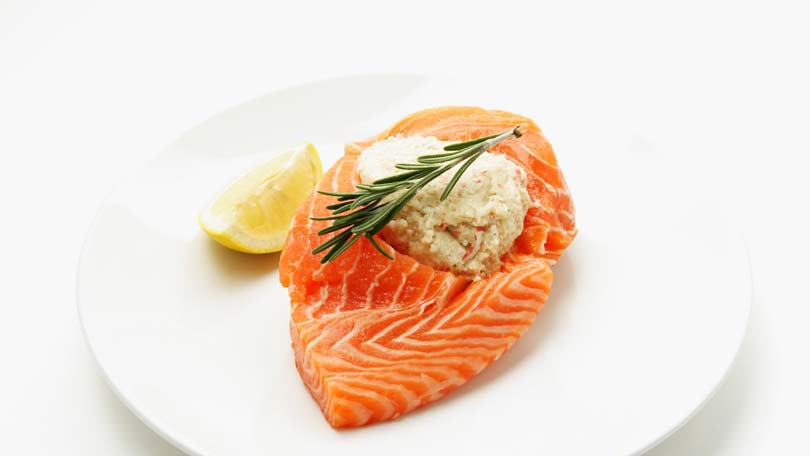
One of the most popular types of seafood in North America and indeed around the world, salmon is a tasty and versatile fish that people have enjoyed for years. Easy to prepare, salmon is a common menu item in restaurants everywhere, and each year, it’s one of the biggest sellers at the supermarket’s fish counter.
Atlantic and Pacific Salmon
There are 6 types of salmon: one Atlantic salmon species and five Pacific species. The Pacific varieties include Chinook (king), sockeye, coho (silver), chum, and pink. All the wild salmon caught is of the Pacific variety because Atlantic salmon is not fished commercially in North America because it is an endangered species.
Some Pacific salmon is farmed, but 95% of the farmed salmon in America is Atlantic salmon. Most is farm-raised on the Pacific coast of Canada and Chile. Experts have found that Atlantic salmon are more adaptable to farming techniques and are more cost-effective to raise as they make better use of the feed that is given them.
What is Fresh Salmon?
Fresh or ‘wild’ salmon is any salmon that is caught in the oceans and rivers of the world where the fish swim freely. As was previously mentioned, the only type of wild salmon commercially fished is Pacific salmon as fishing for Atlantic salmon is prohibited.
What is Farmed Salmon?
Farmed salmon is exactly what one might expect. At a salmon farm, the fish is kept, fed, and netted. The salmon farm has made this fish readily available to markets and restaurants, resulting in salmon becoming one of the most popular varieties of seafood in North America.
Concerns about Farmed Salmon
You’ve no doubt heard about the fears surrounding several species of fish, including the potential dangers of eating salmon that is raised on farms. The general public is often confused about these warnings, especially since doctors are encouraging us to eat more fish and less red meat. So, is it safe to eat fish such as salmon, despite the health warnings issued by many organizations? And why is farmed salmon such a concern?
How farmed salmon is fed is at the center of most of the concerns about this tasty, meaty seafood. Specifically, farm-raised salmon are fed pellets of concentrated fish products. The fish used to make these pellets are usually gathered from the bottom of fishing nets and are of varieties that are not sold in your local fish market. All sorts of fish parts are included in the pellets, even the bones and skin. Unfortunately, the toxins that have built up in the fish’s body also become part of the mix. That’s where the concern arises. When farm-raised salmon eat these pellets, their bodies are taking in concentrated toxins and storing them in their fat, just under the skin. Experts point out that one meal of pellets may contain the dried and compressed body parts and toxins from several whole fish. In contrast, when a wild salmon eats other fish, it’s receiving a ‘regular’ (not concentrated) level of toxin.
Should I Eat Farm-Raised Salmon?
The concerns over farm-raised salmon might dissuade some individuals from including ample portions of fish in their diet. The fact still remains that fish plays an important part in your nutritional health, providing low fat, high protein meal options.
Most studies conducted in regards to farm-raised salmon merely suggest moderation. Most experts say that no more than 1 portion of farm-raised salmon should be consumed each month while individuals can eat as many as 8 portions of fresh ‘wild’ salmon.
When purchasing salmon, be sure to ask what kind you’re getting and plan your meals accordingly. If you can’t find wild salmon in your area, there are a number of web sites from which it can be ordered, though prices will be slightly higher than if you purchased your fresh salmon at the neighborhood grocery store.
